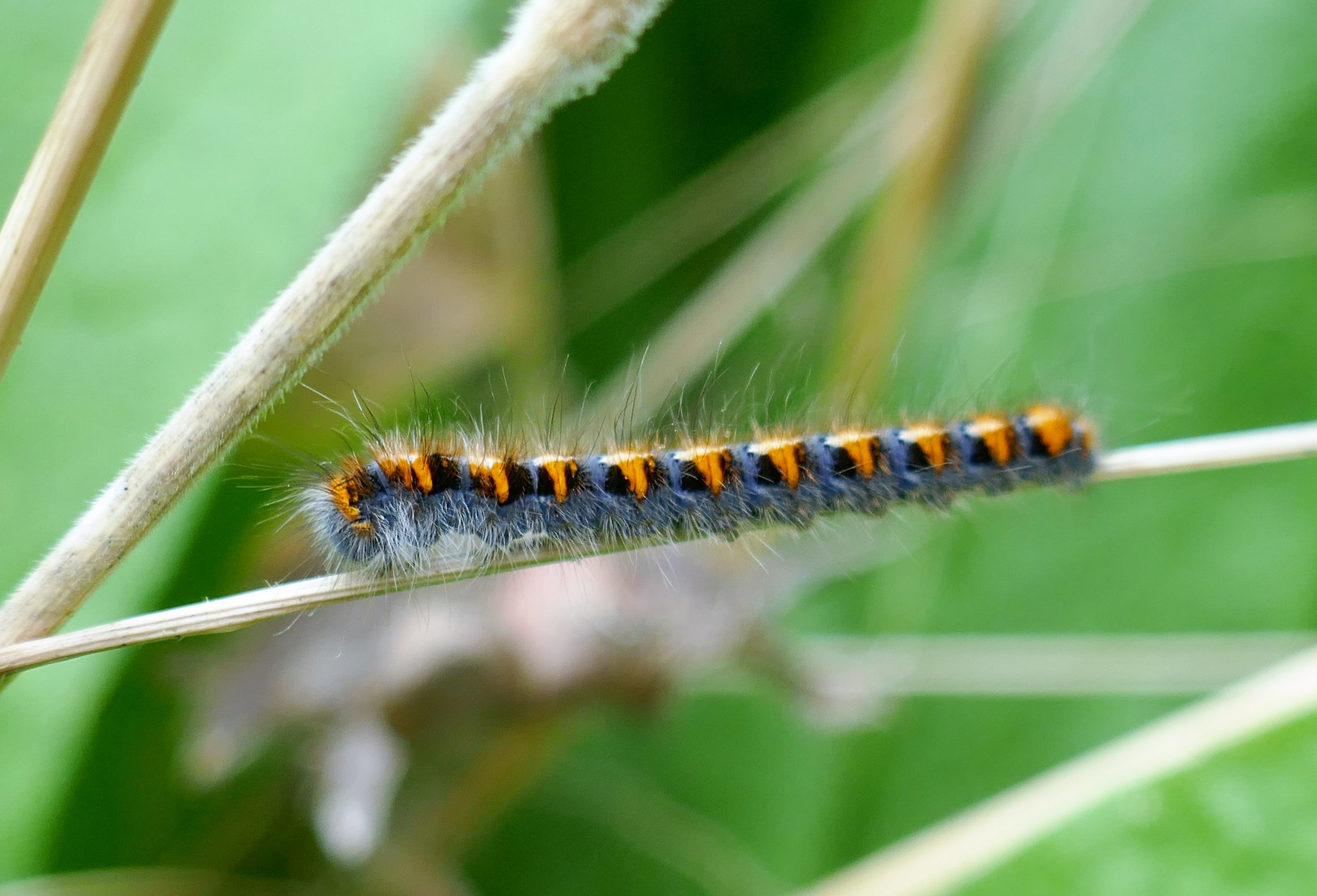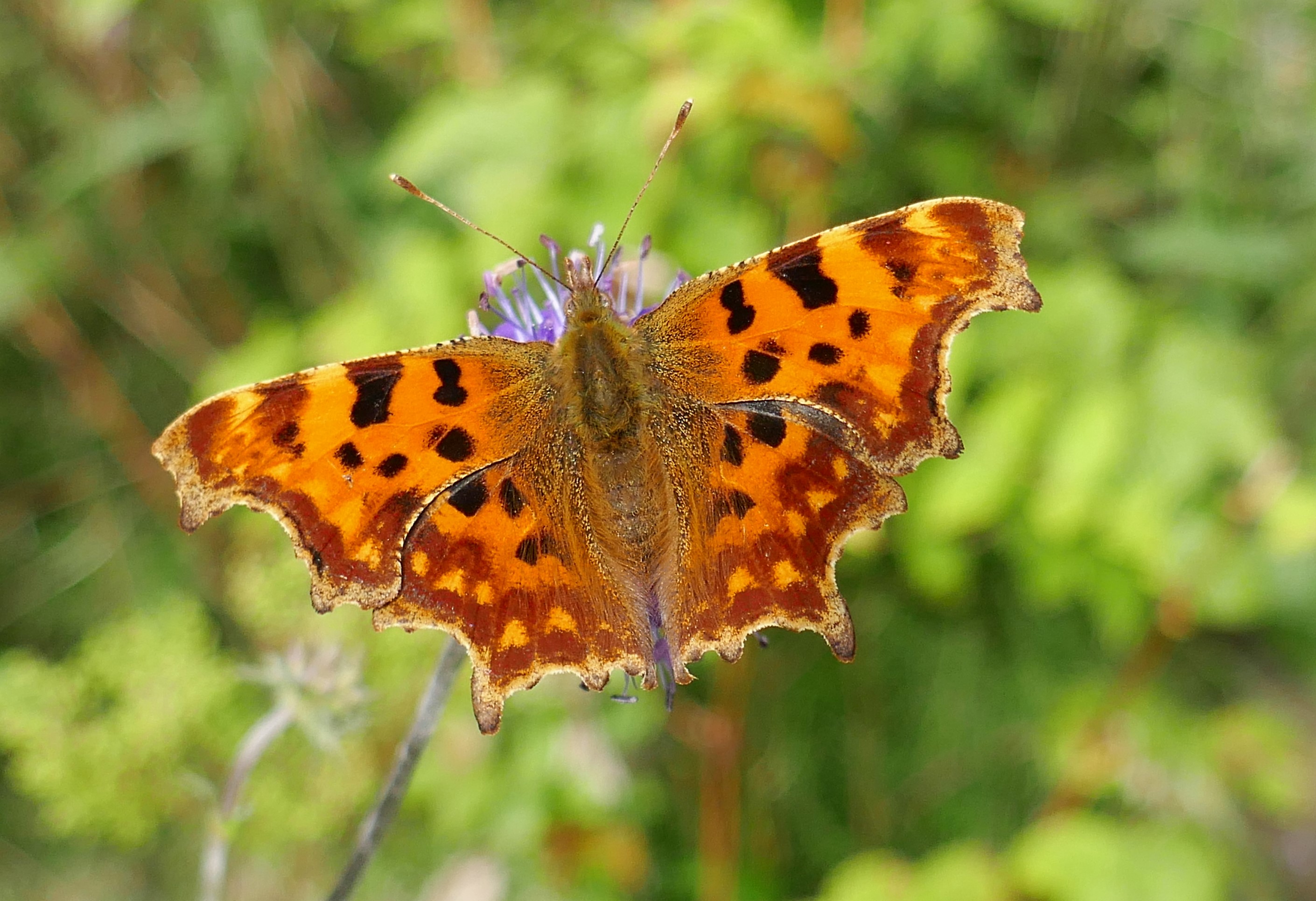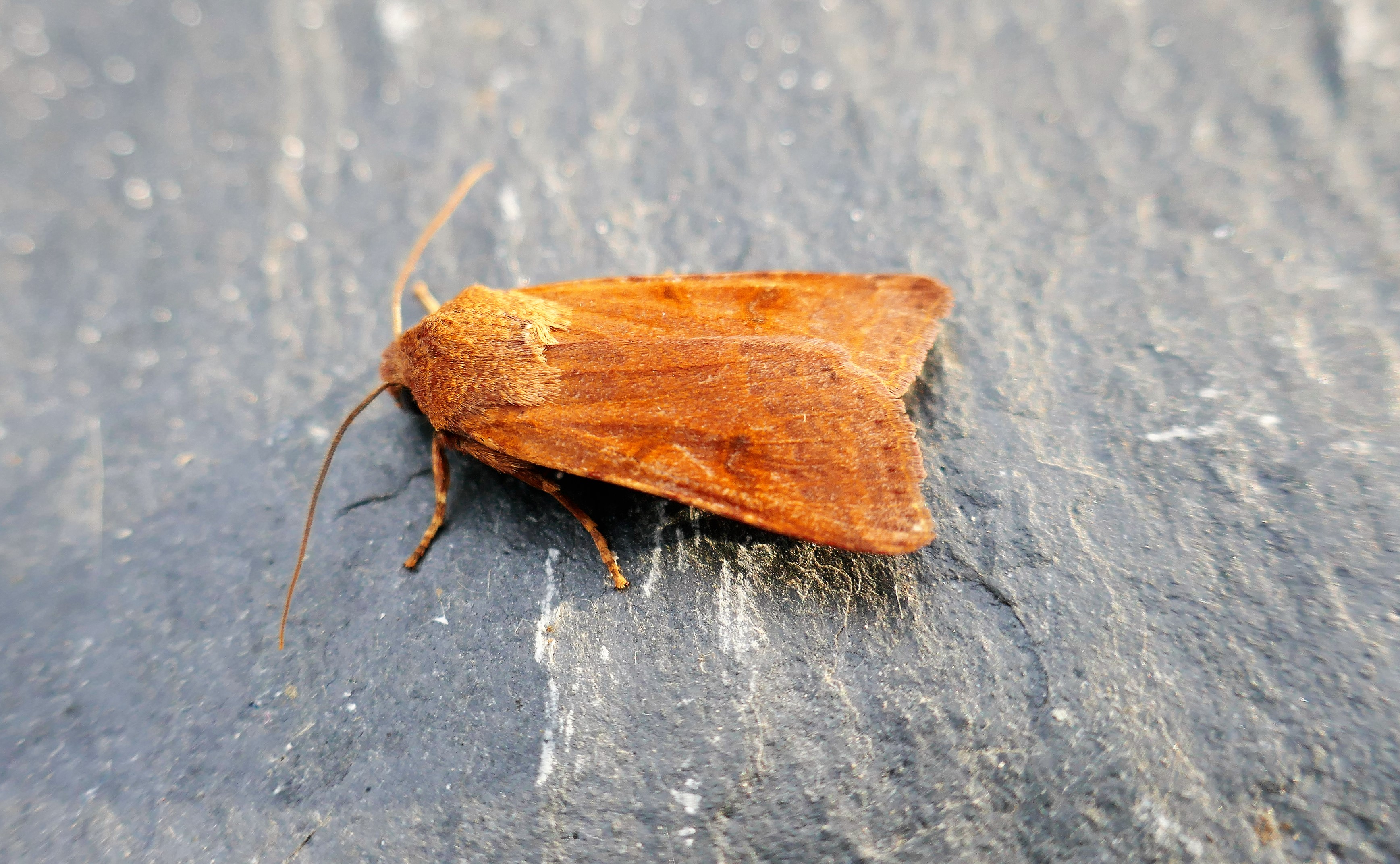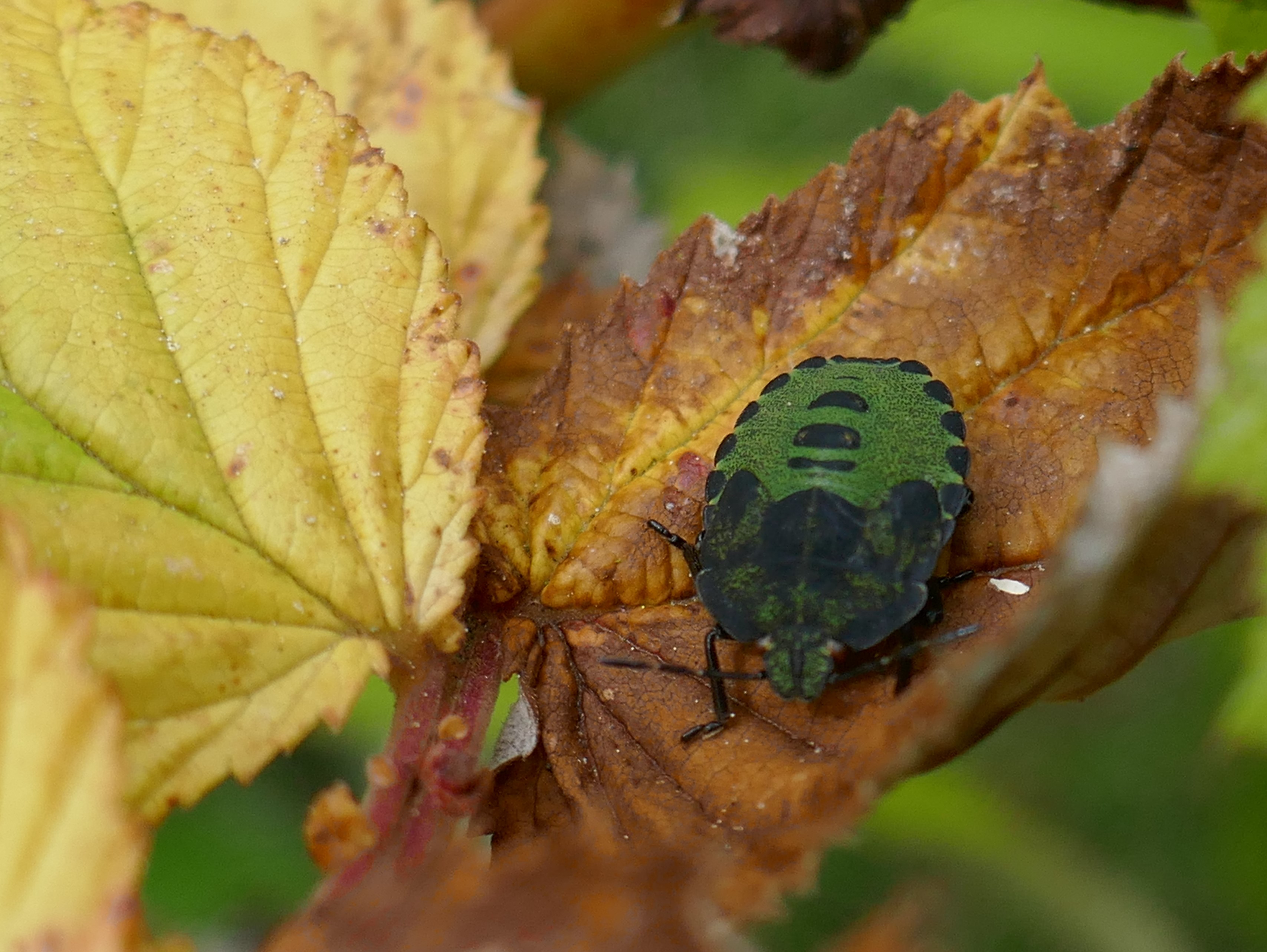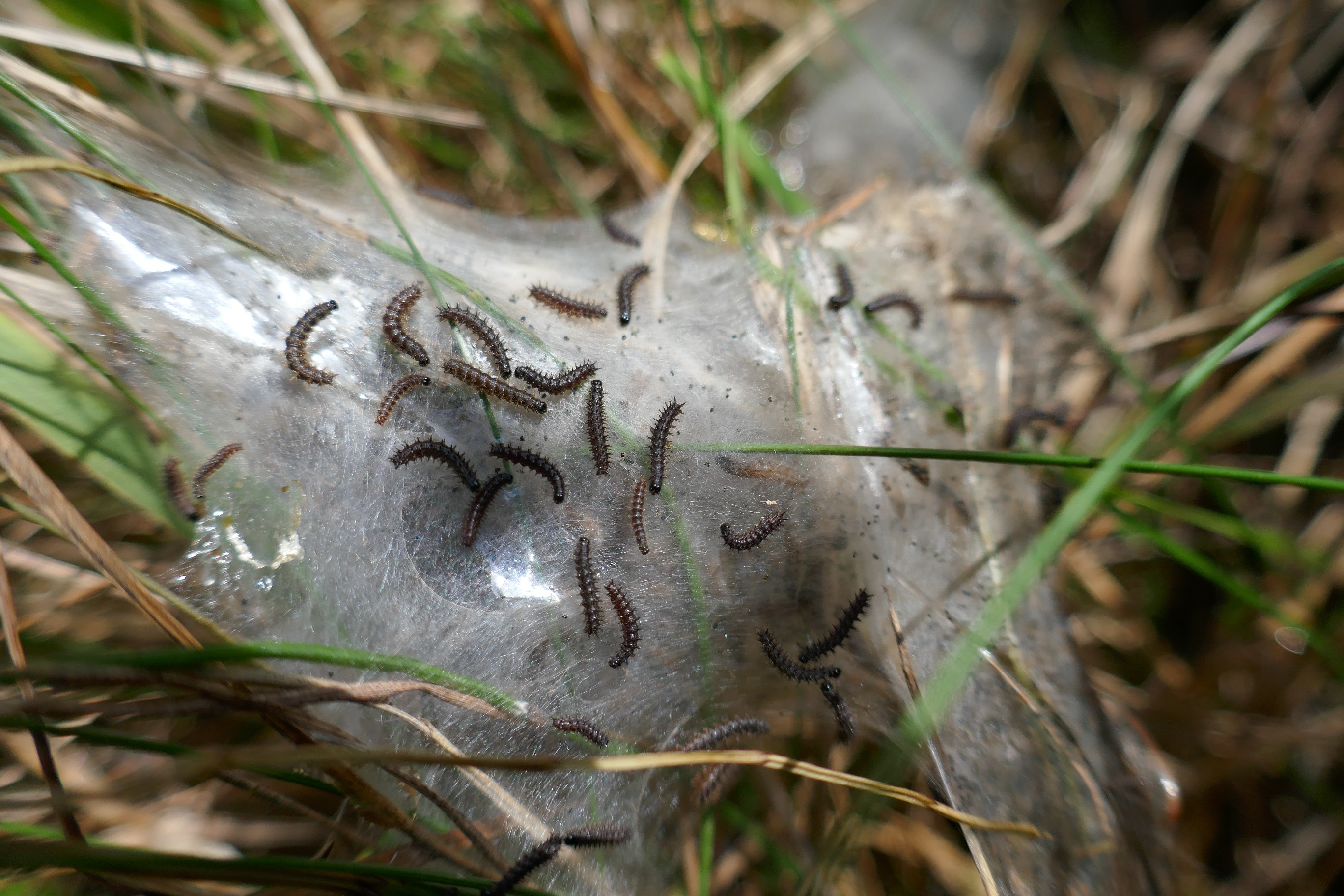Now it’s late September and the heat of summer has passed. We enjoyed a gentle transition from summer into autumn and our adult butterflies and moths are making the most of the opportunity, feeding for hibernation (Small Tortoiseshell, Herald Moth, Comma butterfly), migration (Painted Lady, Red Admiral, Silver Y moth), or breeding (Speckled Wood, Large, Small and Green-veined Whites).
Caterpillars are still present, some very busy feeding before cold weather sets in. In my garden, Oak/Northern Eggar moth larvae are feeding on Common Blackthorn leaves but feeding is brief, with most of the time spent basking and resting. You can see a photograph of this below. While most of my meadow is cut and added to the compost, I left some uncut areas, including the area where my Oak/Northern Eggar caterpillar lives. These uncut areas are refugia for over-wintering invertebrates, such as ladybirds and shield bugs.
A highlight of my garden this September is a lovely female Comma, who stayed for four days taking advantage of my Devil’s-bit Scabious, which she shared with bees and hoverflies. She was easy to photograph, being so focussed, and my hope of having this amazing butterfly stay in my garden is now satisfied. I wonder if she is over-wintering in my mini-woodland? I will not look for her to avoid disturbance, but this is possible. I hope to see the species breed on my nettles, but I am now being greedy!
The Green-veined White, Speckled Wood, and Red Admiral have visited in the past two days, so chances are these are still around in your garden, but soon very few species will be seen. The autumn moths are active on milder nights, and a common species that is flying now is the Beaded Chestnut, an autumn-coloured species! Looking at the photograph below, you will see why it is suited to being on the wing in September and October.
Beyond the garden, there is still insect activity, especially in high-quality grassland habitats. At Butterfly Conservation Ireland’s reserve at Lullybeg, we care for all the species that inhabit the site, and these are all part of the community that forms the connections with the butterfly and moth populations. Common and Black Darter dragonflies remain active, and the largest and most impressive species there at this stage is the Migrant Hawker, a very active predator. Plenty of bumblebees are present, mainly on the Devil’s-bit Scabious, especially Common Carder Bees, some looking very fresh. This species is happy in gardens too, and will even nest in gardens left to grow a little wild. The Forest Cuckoo Bumblebee, shown below, remains active. This species invades the nests of the Early Bumblebee and Heath Bumblebee; both of these will appear in flower-rich gardens. A female Forest Cuckoo Bumblebee is shown below.
There are other late wildflowers to enjoy, besides Devil’s-bit Scabious. Rough Hawkbit is plentiful in its haunts, a cheery flower and much loved by insects. Late-flowering honeysuckle displays its played trumpet blooms on hedges, and sow-thistle waves its yellow heads along waysides and road edges-another hit with nectar seekers.
In short, don’t give up looking because summer is over. There is more to see yet!

